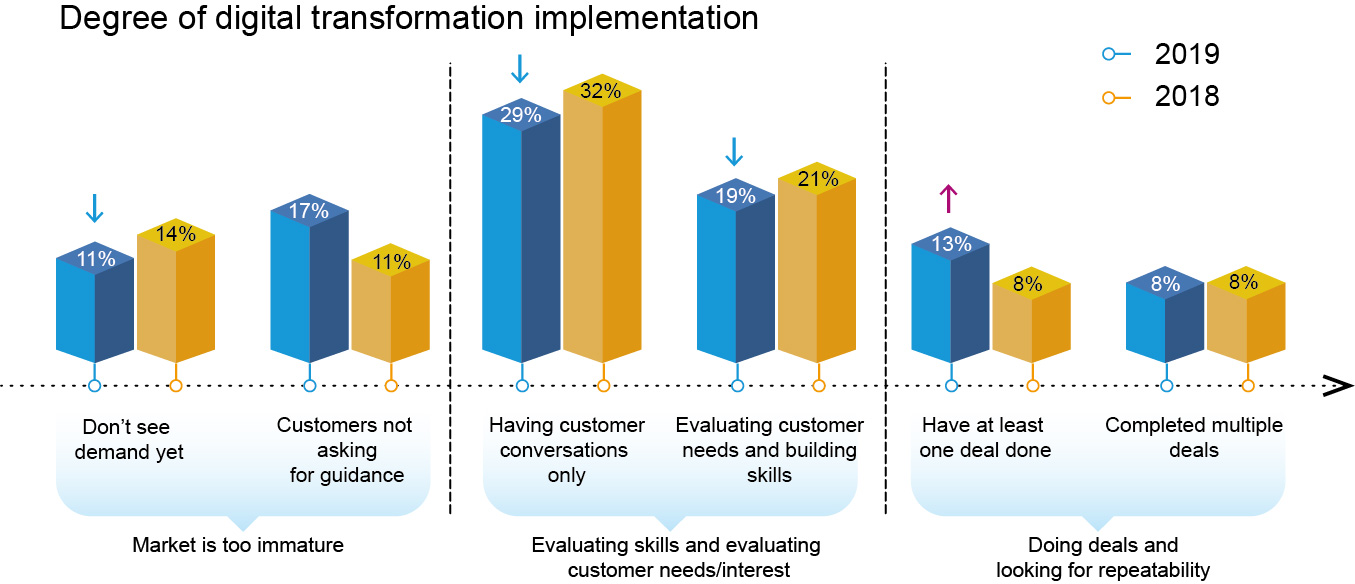The Channel Company: Helping Solution Providers Close the Digital Transformation Vision Gap
This site uses cookies. By continuing to browse the site you are agreeing to our use of cookies. Read our privacy policy>
![]()
Enterprise products, solutions & services

‘Digital transformation’ has become one of the cloud era’s most prevalent terms, indicating a renewed focus on the digital enablement of business processes. This has profoundly impacted the roles of CTOs and CIOs, who must now embrace both technological and business leadership. As a knock-on effect, solution providers must also take up their role as an active agent of change.
However, a gap has emerged between the hype and the reality. Solution providers report that while customers are keen to overhaul business processes to take advantage of new technology — and plenty have begun this important work — there appears to be a ‘vision gap’ for many customers: they simply don’t know to where to start.
This gap presents an opportunity for providers to deliver additional value for clients.
In the IPED Channelytics Annual North American Partner Census for both 2018 and 2019, we asked solution providers to tell us where the level of demand was for digital transformation solutions and what they saw as the path to success. Even though only 21 percent of solution providers said they had delivered at least one digital transformation project (a five percent year-on-year increase from 2018 to 2019), the topic dominated conversations at the C-level for all customers looking toward future investments.
What we find most remarkable about the research is the clear evidence that conversations and evaluations are not translating into solutions. Twenty-eight percent of providers reported that either they hadn’t yet seen active demand from customers or those customers weren’t yet asking for guidance. Meanwhile, a further 29 percent reported that they were only in the customer conversation phase.
As a result, almost half of all solution providers saw little activity in both 2018 and 2019; at best, they were simply having conversations. We see this as a vision gap that represents a marketing opportunity for providers.

Digital transformation sits at the crossroads of technology and business, and the ability to connect them relies on understanding the business functions that drive revenue and cost as well as the possible technology solutions that can be used as support. The connection between the two may often be elusive, but collaboration between a (technology) provider and a (business) end-customer is precisely what the former are in the business of providing.
This means that providers must invest in developing the necessary industry and business operational skill sets to lead the conversation, to help customers develop solutions that can have real business impact.
To help end-user customers close the vision gap and begin to implement meaningful digital transformation projects, solution providers must consider investment in three key areas.
The vendor community has a critical role to play in supporting its solution provider community. Building the capabilities to help end-users envision and then execute digital transformation is an intensive process. To achieve this goal, vendors can provide enablement tools such as reference architectures for industry solutions, training in marketing, and sales tactics to target and appeal to the new business-led buyer and IP sharing — to arm their partner community with the methodologies and tools to deliver solutions. These investments are substantial, but for vendors who often build these capabilities already, it’s a matter of treating solution providers as an extension of their field team and sharing the knowledge.
Digital transformation is complex, and solution providers thrive in complexity. With the right investment and focus, solution providers will become central to helping end-users close the vision gap, ultimately accelerating the transformation of business processes through technology. A combination of industry skills, development capabilities, and consulting services will allow solution providers to lead the conversation.